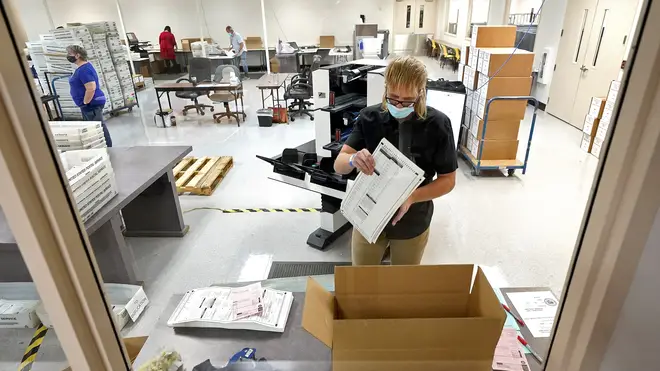
Richard Spurr 1am - 4am
7 November 2020, 07:34

The slow pace of vote counting is a reflection of several factors – not least of which is the response to Covid-19.
The slow pace of the US election count is fuelling a lot of criticism, but there are a number of reasons why it is taking so long to confirm the result.
Bigger turnout and steps that American states took to protect residents from Covid-19 are among several factors in play.
The enthusiasm factor
Even though the count is not yet complete, US president Donald Trump has easily surpassed the number of votes he got four years ago – more than 70 million so far, versus about 63 million in his victorious 2016 run.
Meanwhile, Democrat Joe Biden has gained some 73.9 million votes, versus the 65.9 that Hillary Clinton received.
All in all, some 15 million more voters participated in this year’s US presidential election than in the one held four years ago.

The pandemic factor
Many American states had made it easier for people to vote by mail, in order to prevent long queues of people having to gather during the coronavirus pandemic.
States such as Minnesota, North Carolina and Nevada extended the deadlines for when ballots could be received.
Nebraska and Iowa joined the ranks of states that send an absentee ballot application to every registered voter. New Jersey and California mailed ballots to every registered voter, whether they requested it or not.
Millions of voters took states up on the offer and chose to vote by mail rather than in person on election day.
For some states, that has meant a slowdown in the tabulation of results because votes received by mail often take longer to process than ballots cast at polling places.

The experience factor
Some states have done much better than others when it comes to processing postal ballots.
States such as Florida and North Carolina learned from experience and allowed election officials to process mail-in ballots in the weeks leading up to election day.
In Florida, clerks can start counting ballots 22 days before an election. In North Carolina, beginning five weeks before the election, county boards insert approved ballots into a voting machine, allowing for a prompt tabulation on election day.
However, other states such as Michigan, Pennsylvania and Wisconsin – all with Republican-led legislatures and all of them swing states – made a conscious decision to wait so there would be no counting of postal ballots prior to polling day.
Michigan did eventually allow election officials to process some ballots one day earlier, but the counting of the ballots still had to wait until November 3.

The predictability factor
As state legislators battled over how to process postal ballots, there were warnings of what was to come.
Eugene DiGirolamo, a Republican county commissioner in Bucks County, Pennsylvania – the state’s fourth-most populous county – said two weeks before election day: “My guess is if we’re only allowed to start on election day, it’s going to be three, four, five days after the election when we’ll have these things scanned and counted.
“I am just scared to death that Pennsylvania is going to look really bad, especially if the election for president is close and they’re waiting for results from the battleground states, like Pennsylvania truly is.”